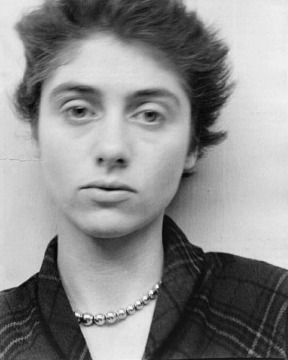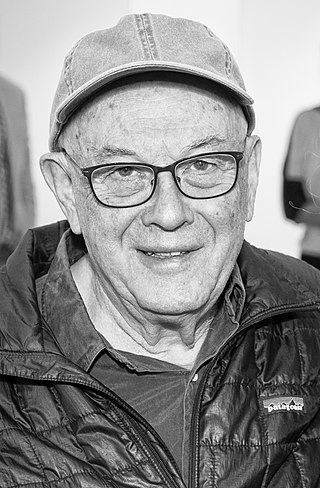Related Research Articles

Dorothea Lange was an American documentary photographer and photojournalist, best known for her Depression-era work for the Farm Security Administration (FSA). Lange's photographs influenced the development of documentary photography and humanized the consequences of the Great Depression.

Diane Arbus was an American photographer. She photographed a wide range of subjects including strippers, carnival performers, nudists, people with dwarfism, children, mothers, couples, elderly people, and middle-class families. She photographed her subjects in familiar settings: their homes, on the street, in the workplace, in the park. "She is noted for expanding notions of acceptable subject matter and violates canons of the appropriate distance between photographer and subject. By befriending, not objectifying her subjects, she was able to capture in her work a rare psychological intensity." In his 2003 New York Times Magazine article, "Arbus Reconsidered", Arthur Lubow states, "She was fascinated by people who were visibly creating their own identities—cross-dressers, nudists, sideshow performers, tattooed men, the nouveaux riches, the movie-star fans—and by those who were trapped in a uniform that no longer provided any security or comfort." Michael Kimmelman writes in his review of the exhibition Diane Arbus Revelations, that her work "transformed the art of photography ". Arbus's imagery helped to normalize marginalized groups and highlight the importance of proper representation of all people.
Robert Frank was a Swiss photographer and documentary filmmaker, who became an American binational. His most notable work, the 1958 book titled The Americans, earned Frank comparisons to a modern-day de Tocqueville for his fresh and nuanced outsider's view of American society. Critic Sean O'Hagan, writing in The Guardian in 2014, said The Americans "changed the nature of photography, what it could say and how it could say it. [ ... ] it remains perhaps the most influential photography book of the 20th century." Frank later expanded into film and video and experimented with manipulating photographs and photomontage.
Susan Meiselas is an American documentary photographer. She has been associated with Magnum Photos since 1976 and been a full member since 1980. Currently she is the President of the Magnum Foundation. She is best known for her 1970s photographs of war-torn Nicaragua and American carnival strippers.

Sally Mann HonFRPS is an American photographer who has made large format black and white photographs—at first of her young children, then later of landscapes suggesting decay and death.

Aperture magazine, based in New York City, is an international quarterly journal specializing in photography. Founded in 1952, Aperture magazine is the flagship publication of Aperture Foundation.

Fine-art photography is photography created in line with the vision of the photographer as artist, using photography as a medium for creative expression. The goal of fine-art photography is to express an idea, a message, or an emotion. This stands in contrast to representational photography, such as photojournalism, which provides a documentary visual account of specific subjects and events, literally representing objective reality rather than the subjective intent of the photographer; and commercial photography, the primary focus of which is to advertise products, or services.

Theodore Brett Weston was an American photographer.

Bruce Landon Davidson is an American photographer. He has been a member of the Magnum Photos agency since 1958. His photographs, notably those taken in Harlem, New York City, have been widely exhibited and published. He is known for photographing communities usually hostile to outsiders.
Richard Misrach is an American photographer. He has photographed the deserts of the American West, and pursued projects that document the changes in the natural environment that have been wrought by various man-made factors such as urban sprawl, tourism, industrialization, floods, fires, petrochemical manufacturing, and the testing of explosives and nuclear weapons by the military. Curator Anne Wilkes Tucker writes that Misrach's practice has been "driven [by] issues of aesthetics, politics, ecology, and sociology." In a 2011 interview, Misrach noted: "My career, in a way, has been about navigating these two extremes - the political and the aesthetic."
Raghubir Singh (1942–1999) was an Indian photographer, most known for his landscapes and documentary-style photographs of the people of India. He was a self-taught photographer who worked in India and lived in Paris, London and New York. During his career he worked with National Geographic Magazine, The New York Times, The New Yorker and Time. In the early 1970s, he was one of the first photographers to reinvent the use of color at a time when color photography was still a marginal art form.
Linda Connor is an American photographer living in San Francisco, California. She is known for her landscape photography.
Dawoud Bey is an American photographer and educator known for his large-scale art photography and street photography portraits, including American adolescents in relation to their community, and other often marginalized subjects. In 2017, Bey was named a fellow and the recipient of a MacArthur Fellowship from the John D. and Catherine T. MacArthur Foundation and is regarded as one of the "most innovative and influential photographers of his generation".
James Welling is an American artist, photographer and educator living in New York City. He attended Carnegie-Mellon University where he studied drawing with Gandy Brodie and at the University of Pittsburgh where he took modern dance classes. Welling transferred to the California Institute of the Arts in Valencia, California in 1971 and received a B.F.A. and an M.F.A. in the School of Art. At Cal Arts, he studied with John Baldessari, Wolfgang Stoerchle and Jack Goldstein.

Dody Weston Thompson was a 20th-century American photographer and chronicler of the history and craft of photography. She learned the art in 1947 and developed her own expression of “straight” or realistic photography, the style that emerged in Northern California in the 1930s. Dody worked closely with contemporary icons Edward Weston, Brett Weston and Ansel Adams during the late 1940s and through the 1950s, with additional collaboration with Brett Weston in the 1980s.
Barbara Crane was an American artist photographer born in Chicago, Illinois. Crane worked with a variety of materials including Polaroid, gelatin silver, and platinum prints among others. She was known for her experimental and innovative work that challenges the straight photograph by incorporating sequencing, layered negatives, and repeated frames. Naomi Rosenblum notes that Crane "pioneered the use of repetition to convey the mechanical character of much of contemporary life, even in its recreational aspects."
Charlotte Cotton is a curator of and writer about photography.
Anthony Hernandez is an American photographer who divides his time between Los Angeles, his birthplace, and Idaho. His photography has ranged from street photography to images of the built environment and other remains of civilization, particularly those discarded or abandoned elements that serve as evidence of human presence. He has spent most of his career photographing in Los Angeles and environs. "It is L.A.'s combination of beauty and brutality that has always intrigued Hernandez." La Biennale di Venezia said of Hernandez, "For the past three decades a prevalent question has troubled the photographer: how to picture the contemporary ruins of the city and the harsh impact of urban life on its less advantaged citizens?" His wife is the novelist Judith Freeman.

Kenneth Randall Light is an American social documentary photographer based in the San Francisco Bay Area. He is the author of twelve monographs, including Midnight La Frontera, What'sGoing On? 1969-1974,Delta Time, TexasDeath Row and, most recently, Course of the Empire, published by Steidl. He wrote Witness in our Time: Working Lives of Documentary Photographers, a collection of recollections and interviews with 29 of the world's most well-known photographers, editors and curators of the genre. He has had his photographs included as part of photo essays and portfolios in newspapers, magazines and other media, has been exhibited worldwide and is part of museum collections such as SF Museum of Modern Art and International Center of Photography. Light was also a co-founder of Fotovision, the Mother Jones International Fund for Documentary Photography and he is the recipient of a Guggenheim Fellowship and three National Endowment for the Arts photography fellowships. He is also a professor at the Graduate School of Journalism at UC Berkeley where he holds the Reva and David Logan chair in photojournalism and he is the director of the school's Logan documentary photography gallery.
Peter Kayafas is an American photographer, publisher, and educator based in New York City. He creates black and white photographs that are "simple and spare, yet quietly overpowering with their evocation of a history on a scale beyond that of individual human lives."
References
- ↑ Kerry Skarbakka, OSU College of Liberal Arts
- ↑ Mike Celizic (April 21, 2009), ""Fall guy" takes pictures of his own plunges", Today
- ↑ Christopher Jobson (January 23, 2013), "Portraits of Falling", Slate
- ↑ "Creative Capital - Investing in Artists who Shape the Future". creative-capital.org. Retrieved 2017-02-28.
- ↑ Marlan, Tori (9 June 2005). "To Leap Without Faith". Chicago Reader. Retrieved 2017-02-28.
- ↑ "Kerry Skarbakka". College of Liberal Arts. Retrieved 2017-02-28.
- ↑ "MCA – Exhibitions: Kerry Skarbakka". mcachicago.org. Retrieved 2017-02-28.
- ↑ "Aperture 179". Aperture.org. Retrieved 2017-02-28.
- ↑ "The falling man: the art of Kerry Skarbakka - in pictures". the Guardian. 2013-03-01. Retrieved 2017-02-28.
- 1 2 "'I Photograph The Body As It Dangles From Dangerous Precipices'". The Huffington Post. 2013-01-11. Retrieved 2017-02-28.
- ↑ "Creative Capital - Investing in Artists who Shape the Future". creative-capital.org. Retrieved 2017-02-28.